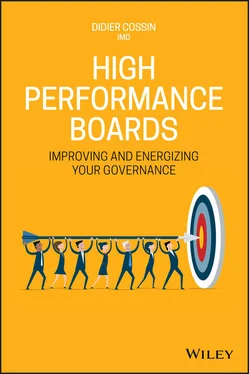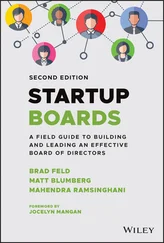Third, dedicated directors should aim to receive as much information from independent sources as they do from management. Rather than relying solely on management information, these board members see it as their duty to track down the most useful social media posts, market information, and other sources.
The Third Pillar: Structures and Processes
As governance becomes more sophisticated, its structures have likewise evolved greatly. Board effectiveness is hugely influenced by the quality of the structures and processes organised by the board secretariat and steered by the chair. It is imperative that boards regularly benchmark these against the ideal situation and act to address any divergence.
In the most basic structural terms, the size of the board should be carefully examined, in addition to the necessary number and effective functioning of board committees. The main goal is to ensure that the board's committee structure is pertinent to the current reality of the organisation. There are a number of innovative and inspiring examples in this regard, such as HSBC's committee on Financial System Vulnerabilities, which addresses one of the primary strategic issues in banking today. In addition, board innovation committees are becoming increasingly common at companies operating in industries at high risk of disruption. Both Procter & Gamble – a global giant in fast-moving consumer goods – and UK-based bank RBS have a Technology and Innovation Committee on their respective boards, for example.
As we mentioned earlier, beyond its structural ‘hardware’, a board should radiate a well-managed diversity of personality, experience, gender, and opinion. The independence of board members is crucial too – but so is their structured access to the right individuals. For example, in some organisations the chief risk officer has a dotted reporting line to the chair of the risk committee, or to the chair of the board.
Along with structures, a number of processes need to be in place to ensure that the board systematically addresses the issues within its remit. The list of processes that truly matter includes agenda setting, reviewing and monitoring management performance, CEO succession, stakeholder engagement, audit, regulatory compliance, risk, strategy, ongoing board improvement, and many others.
A strong board will integrate these processes smoothly within its yearly agenda. Below, we briefly discuss four of them: strategy, agenda setting, evaluation, and CEO succession. We then examine board structures and processes more closely in Chapter 6and other parts of the book.
The board's strategy process is critical to increasing its effectiveness. Strategic board involvement occurs along three dimensions – co-creation, supervision, and support – and good processes will enrich all three. Typically, regular board meetings will complement retreats, and external presentations will add to internal ones. Focused, decision-oriented meetings will complement boards’ long-term strategic understanding of the company and its industry. A well-designed board strategy process strengthens the firm's strategy by helping to define it, aligning it with objectives and ensuring commitment. Ultimately, this enables boards to efficiently assess the company's strategic risks and opportunities. We will discuss the board's strategic role in more detail in Chapter 15.
Setting the agenda is another key board process. This necessarily involves a number of balancing acts, such as board-management interaction, consideration of stakeholder issues, clear prioritisation, a focus on key issues, and time management. A strong agenda-setting process will be both strategic, by providing a high-level setting for the next two years, and tactical, by ensuring the board spends its time on the most critical issues.
A third decisive process is board evaluation. When directors are not performing to the standards set by the board, they need to receive feedback clearly indicating this. A poor evaluation process contributes to governance failure, which is why thriving boards engage in a formal assessment procedure. This might be self-assessment or external assessment, and should cover individual directors' roles, dynamics, and performance. A good practice is to utilise technology. Using smartphones or tablets to evaluate board sessions during meetings, for example, provides results in real time and offers an opportunity for careful and dynamic scrutiny in between annual evaluations.
Finally, CEO succession is a critical process that requires ongoing attention and planning. Whether based on an internal or external ‘horse race’ or search, the process of identifying leadership talent and candidates should focus on the transparency of selection criteria, the fit with the organisation, the quality of the on-boarding process, and the smoothness of the transition.
Hewlett-Packard (HP) provides a good example of difficult successions creating real governance risk. In a period of six years, HP fired three CEOs, resulting in corporate turmoil that negatively affected the company's brand reputation. In one of the cases, the HP board did not meet the new CEO before proceeding with the nomination. This raises questions regarding the process in place, and the implied failure of the board to identify a candidate who would fulfil the company's strategic vision.
The Fourth Pillar: Group Dynamics and Board Culture
The three board effectiveness pillars we have examined so far include focused, dedicated people accessing different types of information and applying this to increasingly sophisticated structures and processes. In keeping with this strongly social, people-centric snapshot, the dynamics within this group of people constitute the final pillar in our edifice. This pillar concerns how board members interact as a group, and what they individually bring to and collectively take away from their discussions. Over time, these dynamics give rise to a specific board culture: a set of customs, practices, and often unspoken rules about ‘how we get things done around here’.
As with any group, it sometimes doesn't take much for a board to go down the path of inefficiency and dysfunction. Sleepy, low-energy boards are sadly quite common. And in some cases, dysfunctional dynamics are intentionally used to set a board up for governance failure – for example, through late distribution of meeting documents and not making relevant information available. But some of the more benign board pathologies can be just as destructive. These include the presence of disruptive or dominating members on the board, or a tendency to group-think, where board members avoid any paths less travelled in an effort to ingratiate themselves with the group.
These dysfunctions are often symptoms of a deeper issue, such as a lack of trust or overlapping roles. Governance is enriched by directors' different opinions and constructive dissent; having a critical view of assumptions makes for an effective strategy. Yet some firms appoint directors who are close associates of the company's founder or CEO. They may be prominent figures in their respective industries, but their role on the board is circumscribed by their relationship with a dominant figure in the company.
Interactions between the board and senior management are an important aspect of this pillar. BlackBerry (formerly Research in Motion) once thrived on the long-running partnership and friendship of its two co-CEOs. Once they stepped aside, deep divisions surfaced within the company and the board regarding its flagship product, key technology alliance, and planned China expansion, with the new CEO actively canvassing behind the scenes to kill off some of these flagship initiatives. BlackBerry's share price then plummeted, and its product offerings were considered late to market.
Читать дальше












